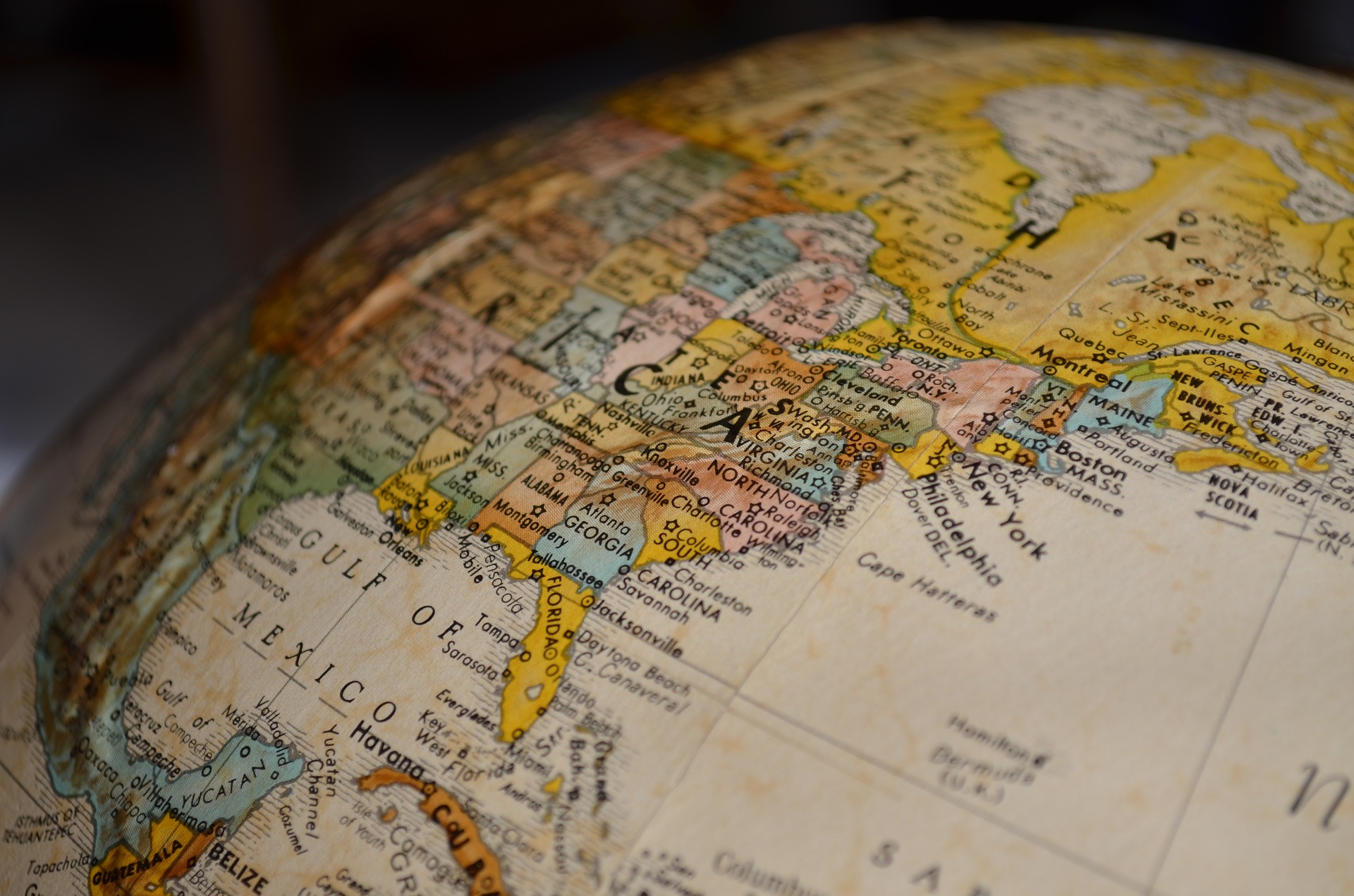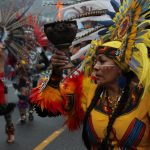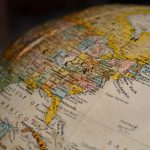
North America’s human scene eagerly mirrors that of its genuine environment: moved, rich, and persistently developing.
North America, the third-greatest central area, connects from the little Aleutian Islands in the northwest to the Isthmus of Panama in the south.
North America’s genuine geography, environment and resources, and human topography can be pondered freely.
North America and South America are named after Italian aide Amerigo Vespucci. Vespucci was the fundamental European to suggest that the Americas were not a piece of the East Indies, but instead a by and large secluded landmass. The pieces of the landmass that extended out north of the Isthmus of Panama became known as North America.
Today, North America is home to the inhabitants of Canada, the United States, Greenland, Mexico, Belize, Costa Rica, El Salvador, Guatemala, Honduras, Nicaragua, Panama, and the island countries and districts of the Caribbean Sea and western North Atlantic Ocean.
North America’s human scene eagerly mirrors that of its real environment: moved, rich, and constantly developing. From their beginnings to the current day, the social classes of North America have worked with and against their natural variables to suffer and prosper.
Vital Cultures
Local social orders shaped, and were formed by, the geography of North America. The fundamental North Americans are acknowledged to have moved from Siberia, in upper east Asia, by getting a land associate over the Bering Strait. These general populations spread out southward, to present day Florida, California, Mexico, and Central America.
The Olmec and the Maya, local to Central America, manufactured the principle metropolitan networks on the landmass, finally inciting the unprecedented metropolitan spaces of Tenochtitlan, Texcoco, and Tlacopan. These metropolitan networks, in what is now central Mexico, paraded present day planning developments, as channels, elevated structures, and water framework systems.
An impressive parcel of these early North American social orders were tentatively and horticulturally advanced. Mayan timetables and annals recorded heavenly events like obscurations and incidental changes. The Mayans were furthermore mathematically advanced. Their checking system had the alternative to address extraordinarily tremendous numbers using only three pictures: spots, lines, and a football-shaped picture that showed a zero. The Mayans were, believe it or not, the chief culture to have a formed picture to no end.
Social orders all through southern North America gathered corn, squash, and beans in standard cycles. This sort of agriculture allowed critical municipal foundations to be made. People were now not bound to convey food and shelter for their families—a couple of gathering could work in the food and improvement organizations while others became subject matter experts, specialists, and political pioneers. Driving North American human headways join the Maya and Aztec, in what is by and by Mexico, and the Iroquois, nearby to southeastern Canada and the northeastern United States.
The perpetuation of the northern piece of the landmass encouraged other local organizations to continue with traveler lifestyles. These social orders didn’t set up metropolitan areas or rustic core interests. Taking everything into account, they followed positive environment plans, typical agrarian cycles, and animal migrations.
The Plains Indians, for example, followed a periodic brushing and development of the American bison. Fields Indians join Lakota, Blackfoot, and Nez Perce. Fields Indians ate wild ox meat as their fundamental wellspring of food, and used stows away and irritating issues, habitations, contraptions, and attire. The extent of the wild ox, which reached out from the southern Prairie Provinces of Canada, through the Great Plains, to the U.S.- Mexico line, agreed with the level of Plains Indian social class. They were identified with such a degree that the conceivable annihilation of wild ox in various spaces of the United States—through overhunting, headway, and antagonistic to local government draws near—radically incapacitated the power and effect of the Plains public.
The environment moreover influenced the standard feelings and social development of North American local organizations. For instance, the Inuit, neighbors to the Arctic, were significantly influenced by the aurora borealis, or Northern Lights. They acknowledged the bewildering light shows were photos of their friends and family in endlessness, the spirits of animals and spirits, and visual associates for pursuing. Inuit moreover acknowledged that all things have spirits, and that spirits existed to get those spirits. With respect to the natural framework (the living and nonliving things in an environment), Inuit social class planned to keep a reasonable presence.
Contemporary Cultures
Contemporary North American social orders are similarly fundamentally affected by the landmass’ rich and moved environment. Our globalized world has crushed these social orders to encourage complex strategies for partnering with, and profiting with, geographic resources.
North America’s money related base is focused commonly on the extraction, improvement, and trade of ordinary resources. Neighborhood social class, similarly as open governments and common affiliations, in like manner use standard resources. Guatemala, for example, has an ordinary medicine system, which consolidates cultivators and spiritualists who use remedial plants to treat illnesses. Costa Rica has cultivated an association of functional and sensible trade coffee makers uniquely crafted to a worldwide market.
The movement business is moreover a huge piece of North America’s economy, especially for the little island nations of the Caribbean Sea. These island nations offer immaculate tropical conditions. Their brilliant coral reefs are one of the head plunging protests in the world. The islands’ valid associations with the United States and Europe ease travel courses of action and language blocks. The islands see around 20 million visitors reliably. In 2010, the movement business offered more than $39 billion to the region’s economy.
A couple of affiliations advance the movement business that is more valuable to neighborhood economies and natural frameworks. The Caribbean Alliance for Sustainable Tourism, for example, intends to propel the legitimate organization of the area’s standard resources. Reasonable the movement business maintains progression of neighborhood associations, as opposed to overall undertakings, for instance, worldwide hotel organizations.
The Caribbean movement business is also developing more ecotourism openings for visitors. Ecotourism urges tourists to unimportantly influence the normal living space. Ecotourism lifts travel to standard protests, similar to coral reefs, instead of making complaints like clubs.
North America’s multicultural history is another defining feature of the landmass’ human geography. Outsiders have searched for promising conditions, particularly in the United States and Canada, for a long time. Outsiders from Europe, Asia, Africa, and South America have added to the headway of the landmass. Outsiders or posterity of laborers to North America have gotten sensible, business, and social pioneers.
The strong presence of transients is reflected in present-day ethnic regions: the Cuban “Little Havana” in Miami, Florida; the Somali “Little Mogadishu” in Minneapolis, Minnesota; the Korean “Koreatown” in Toronto, Ontario, Canada; and the North African “Little Maghreb” in Montreal, Quebec, Canada, are a couple. Mexico City’s “Barrio Chino” is one of the most diminutive Chinatowns on earth, only two cities long. Anyway Barrio Chino checks 3,000 gatherings of Chinese inheritance inside its cutoff points.
Various pilgrims are untouchables. According to the United Nations, an untouchable is a person who stays outside the country of their personality propelled by a neurotic dread of being abused. Uprooted individuals may fear money related trouble, or political or pervasive weight. Uprooted individuals may moreover move because of a calamitous occasion.
Critical outcast peoples in Canada consolidate tenants getting away from normal clashes in Sri Lanka, political abuse in Pakistan, and violence in Colombia. Huge evacuee peoples in the United States join occupants getting away from desperation in Ethiopia, political abuse in Vietnam and Cuba, and seismic quakes in Haiti.
Since 2006, Ottawa, Canada, has been the site for World Refugee Week, which incorporates specialists, scholastics, and activists from around the globe. This celebration of assortment is rehashed in the various ethnic and social celebrations that happen across North America.
Political Geography
North America’s arrangement of encounters and improvement have been framed by its political geography. Political topography is within and external associations between its various governments, occupants, and spaces.
Memorable Issues
Contact between the local people of North America and European explorers was the critical event for the landmass’ political geology. Italian explorer Christopher Columbus’ first appearance on Caribbean soil in 1492 set under manner the excursions of various Europeans: Spanish travelers Hernando De Soto and Ponce de Leon; French swashbuckler Jacques Cartier; and British pioneers Sebastian Cabot and Henry Hudson.
The excursions of these explorers stirred diverse European countries to ensure and colonize North American soil. European colonizers found particular ways to deal with work with and against North America’s local organizations.
Colonizers in the present-day U.S. pushed nearby peoples westward. Through affliction, war, and compelled development, various neighborhood networks were annihilated. The huge local districts were diminished to separated reservations.
Colonizers in present-day Canada set up a booking structure that got various Indian settlements at this point separated them from headway. Intermarriage among Europeans and local people made a French-Indian social class alluded to right now as the Metis.
In Mexico, Central America, and the Caribbean, nearby peoples were even more totally planned into the political and social systems. Mestizos, people of European and local fall, have uncommonly added to the social plan and culture of Latin America.
Interest and battle have altogether affected the associations between North American countries. The United States and Canada have the longest non-activated line on earth, for instance. This peaceful line reflects a consistent, pleasant association between the two countries.
North America’s arrangement of encounters is spotted with battle, regardless. The Mexican-American War (1846-1848) resulted in the United States getting 1,294,994 square kilometers (500,000 square miles) of Mexican district, connecting from the Rio Grande to the Pacific Coast.
Conflicts have moreover caused strains among inhabitants of a singular country. The Seven Years’ War (1756-1763) saw all French areas east of the Mississippi River being given up to Britain. This fundamentally moved Canada’s political geography, making divisions between French Canadians and those of the British Commonwealth. This division really impacts Canadian legislative issues.
North American countries have furthermore persevered through normal contentions. The normal conditions that occurred in Honduras, Nicaragua, Guatemala, and El Salvador between the 1970s and 1990s killed a colossal number of customary residents and pushed various others to move to Mexico, the United States, and Canada. The area in like manner transformed into a point of convergence for global methodology and financial assistance. The United States, for instance, expected to guarantee its monetary and political interests by sponsoring distinctive military governments and guerrilla social affairs.
Contemporary Issues
Today, North America’s political geography is significantly affected by monetary and fragment designs. Two critical game plans—the North American Free Trade Agreement (NAFTA, supported in 1994) and the Dominican Republic-Central America Free Trade Agreement (CAFTA-DR, embraced in 2004)— have impacted trade between countries in the central area. Most out and out, the game plans have decreased or killed commitments and duties. A commitment is a kind of cost charged for things purchased outside the country. A duty is another kind of evaluation, charged on imports and passages.
The two procedures have discarded commitments on U.S. moreover, Canadian plant tolls, similar to corn, wheat, and soybeans. The courses of action have moreover diminished tolls on stock like coffee, sugar, normal items, and vegetables. These are critical passages for the rest of the central area.
While the plans have worked with trade among countries and spaces of North America, they have furthermore caused major political and money related issues. Corn imports to Mexico have crushed various Mexican farmers, who can’t go facing the lower U.S. of course Canadian expenses.
NAFTA is moreover acknowledged to have pushed various organizations out of the United States and into the more affordable work markets of Mexico, Central America, and the Caribbean. Associations imagine that it’s more moderate to create items in these spots for certain reasons. Wages are lower and there are less prosperity and security rules. Since there are often less restrictions on youth work and less opportunities for preparing, numerous associations find significantly more subject matter experts. These more affordable work markets decline the strength of the U.S. creating region.
Development is possibly the most sensitive piece of North America’s political geography. Most development is filled by destitution. People from North America’s youthful nations, similar to Haiti, occasionally move to the landmass’ made countries, similar to the United States.
Development can be a long, problematic association. It incorporates something past the real migration beginning with one country then onto the following. The lawmaking bodies of the two countries should agree to the migration. Travelers ought to every now and again acquire capability with another tongue and culture, including techniques for dressing, eating, and blending. Outcasts wishing to become occupants ought to in like manner take classes to show they are devoted to their new country. Habitually, pioneers ought to depend upon karma: In the United States and Canada, lottery systems routinely sort out which outsiders can truly move.
In light of these difficulties, many destroyed transients from Mexico, the Caribbean, and Central America have illegitimately settled in made countries. Unlawful travelers migrate for comparable reasons legitimate outsiders do—to look for better monetary and political opportunities.
Intellectuals of unlawful development say these specialists will undoubtedly do bad behavior and use public government help programs, for instance, those that help pay for preparation and clinical thought. Savants say these pioneers don’t add to society by paying charges that save these public undertakings.
Future Issues
After the manipulator attacks of September 11, 2001, the United States and all of North America ended up being more stressed over prosperity. Public security at the worldwide, regional, and local level will continue being a huge issue. Worldwide, the made countries of North America, especially the United States, continue orchestrating their political presence in the world while protecting themselves from dread based oppressor attacks at home.
Prescription management has become more expressed commonly, especially along the Panama-Colombia line and the U.S.- Mexico line. This trade has been associated with the over the top violence that as of now troubles northern Mexico, hurting political relations among Mexico and the United States.
Perhaps the fundamental pieces of North America’s political and money related future lays by and large on its undertakings to restrict the effects of natural change.
The rule or reduction of non-renewable energy source side-effects is perhaps the principle piece of diminishing a risky air deviation and restricting the effects of natural change. As a component of the 2009 tranquil accord known as the Copenhagen Accord, some North American countries assented to diminish spreads. The United States, one of the world’s greatest producers of transmissions, agreed to lessen ozone exhausting substance releases by 17% under 2005 levels by 2020. Costa Rica vowed to be absolutely carbon impartial by 2021.




